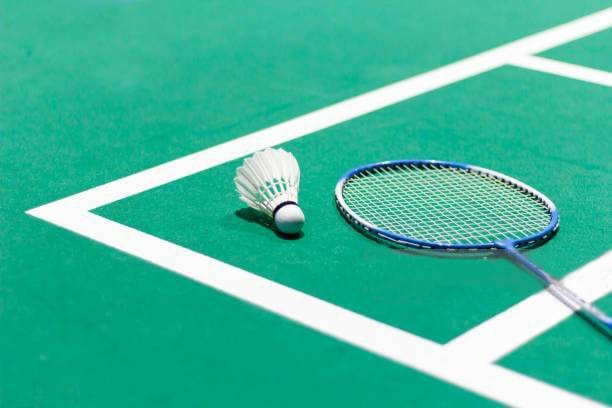
Badminton is a game of agility and accuracy. Almost everyone can play it, but not everyone can master it. To master any sport, knowing the nooks and corners of that sport is essential. Similar in the case of badminton as well.
Hence, knowing the badminton court dimensions and appropriate rules and regulations becomes necessary. In this blog, let's discuss the dimensions and size of the badminton court, how to build a perfect one, etc. To know more, read the blog till the end.
What Is the Optimum Size and Dimensions of a Badminton Court?
The badminton court dimensions and its size are as follows: The dimensions presented are based on the regulations set by the Badminton World Federation.
A standard singles badminton court has a length of 13.4 metres, 44 feet, and a width of 5.18 metres, around 17 feet; diagonally, the length is around 14.366 metres overall.
For doubles, the size varies; however, the optimum and recommended size for the court is 13.4 metres, which is the same as 44 feet, but the width here changes to 6.1 metres, which is around 20 feet. Diagonally, the length of the court is around 14.723 metres.
Despite this, there are other vital measurements to consider, like the net height from the post, which is around some 1.55 metres, which is 5 feet and 1 inch. The net height at the centre is 1.524 metres, which is 5 feet. The distance of the short service line from the net is around 1.98 metres, which is 6 feet and 6 inches. The long service line for the doubles match is around 0.76 metres, 2 feet and 6 inches.
What Are the Different Parts of the Badminton Courts?
The badminton courts represent various areas which hold equal significance in the game.
Badminton Net
The badminton net is an integral part of the badminton game. It is positioned in the middle of the court, dividing it into two halves.
Posts
The posts help the net to hold and manage the correct height. The posts are placed on the double side lines irrespective of whether the singles play or the doubles.
Service Courts
Service Courts are another essential part of the badminton courts that hold a major significance. However, there are different services courts, like,
Left Service Court: The left half of the court on each side is used for serving and receiving the serves.
Right Service Court: The right half of the court is also used to serve the receiving services.
Fore Court: The forecourt is the line between the net and the short service line.
Mid Court: Midcourt is the difference between the short service and back boundary lines.
Court Lines
There are different court lines in the badminton court.
Also Read: Exercises for Badminton Players
Baseline: The baseline is located on the back boundary line on each side of the court.
Sidelines: The inner side boundaries narrow the court for the singles play, and the outer boundaries make the court wider for the doubles play.
Service Lines: Service lines are of two types: the short service line for the singles play and the long service line for the doubles play. The short service line is closer to the net, marking the minimum distance a service must travel. The long service line is closest to the baseline, marking the maximum distance a serve can travel in doubles.
Centre Line: The centre line divides the service courts into the right and the left service courts.
How to Build Badminton Courts?
Building proper badminton courts requires taking proper measurements, making accurate markings, and installing them.
Plain Ground
Always select a plain and a large surface area to construct a badminton court free from all sorts of barriers like trees, etc., to make playing more accessible and comfortable for the players. Also, you should choose the best flooring available for playing badminton to prevent damage or injuries.
Net Posts
Once everything looks OK, place the net posts on every side of the court to ensure they are positioned at the right height to prevent further damage, and afterwards, attach the net to the posts to ensure the correct height from the surface.
Markings
Mark every line required in the badminton court, like the service area, boundary line, service line, centre line, baseline, etc.
Also Read: Benefits of Playing Badminton
Lightning and Equipment
Ensure the lighting is installed for proper visibility if you play during the night. For the equipment, you can have additional comforts during the gameplay, like a scoreboard and spectator seating, for an enhanced appearance.
Frequently Asked Questions about Badminton Court Dimensions
At What Height Should the Net Be Set in the Badminton Court?
The net on the standard badminton court should be around 1.55 metres high at the post and 1.524 metres at the centre.
What Is the Difference between the Sidelines and Service Lines in the Singles and Doubles?
The singles use the inner sidelines, whereas the doubles use the outer sidelines. The long service lines are the back boundary for the singles, and the doubles are 0.76 metres inside the back boundary. The short service line is the same for both the singles and the doubles.
How Does the Court Layout Change from Indoor to Outdoor Badminton?
When transitioning from indoor to outdoor, only the playing conditions change, not the dimensions. The outdoor courts require adjustments to accommodate environmental or external factors.
The badminton court dimensions are essential in enhancing and taking your performance to the next level. Here, when you play systematically, with a proper setup, there are more changes to leverage your performance in badminton!
Turf Town is a platform to discover the best playing grounds near you. You can also join a group of people who share your interest in the game. The app is available for both Android and iOS users.
Thank you!